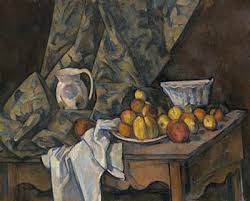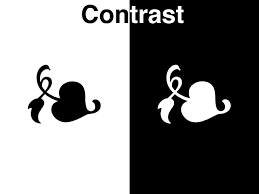Principles of Design
Balance

the arrangement of lines, color, values, textures, forms and space. There are 3 types of balance: formal or symmetrical or informal or asymmetrical and radial balance. Formal balance has an equal weight on both sides. Informal has a different weight on each side to maintain balance, Radial balance is a circular balance moving out from a central object to maintain balance.
Emphasis

is the way of bringing a dominance and subordination into a design or painting. Major objects, shapes or colors may dominate a picture by taking up more space or by being in volume on by being darker in color than the subordinating objects, shapes, and colors. There must be balance between the dominant and subordinating elements.
Movement

the use of lines, color, values, textures, forms and shapes to carry or direct the eye of the viewer from one part of the design or picture to other called movement. Movement is created in art by the artist uses the elements of design. It is generally created by the arrangement of shapes.
Variety and contrast




an artist uses elements of art to create diversity and differences in design. Contrasting colors, textures, and patterns all add interest to the artwork. Highlights of color to the corners of some shapes may be used to add contrast.
Proportion
the size of one part of artwork to its other parts is called proportion. Artists use proportion to show emphasis, distance and use if space and balance
Unity

is the result of how all elements and principles work together. All parts must some relation to each other. They must fit together to create the overall message and effect.
Repetition
Repetition
fr. Journey towards MAPEH 7 k12, pp 97- 98

No comments:
Post a Comment